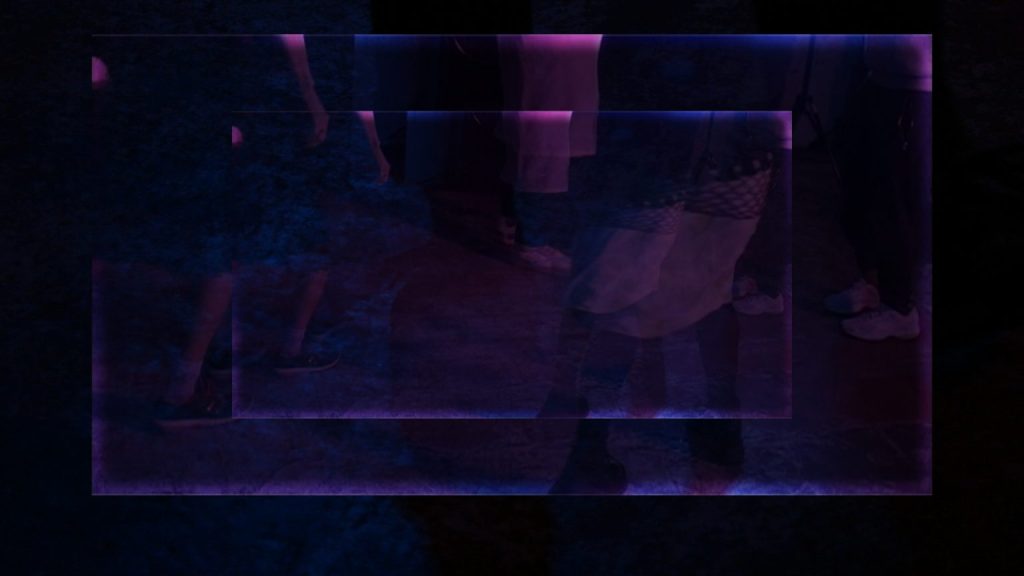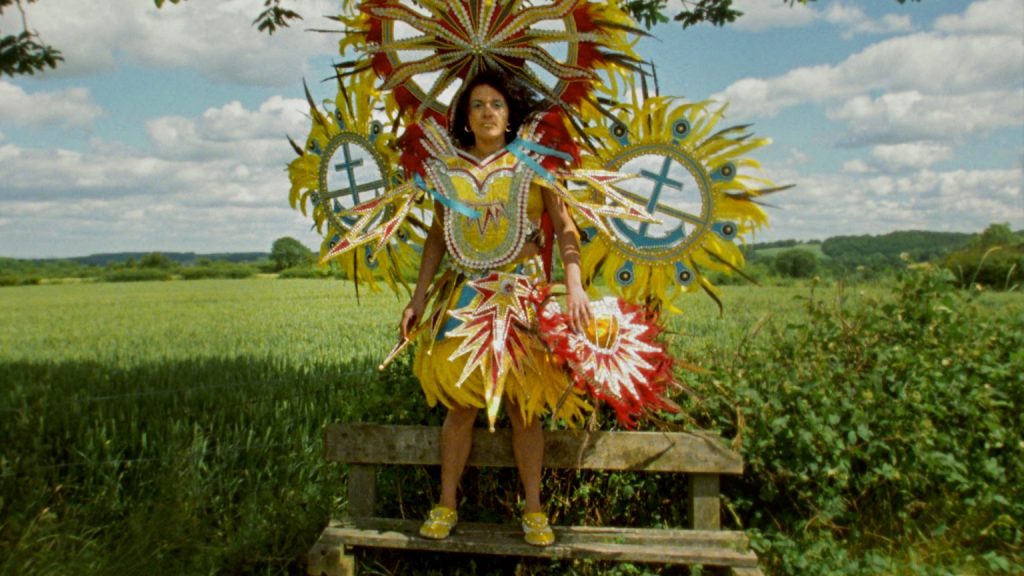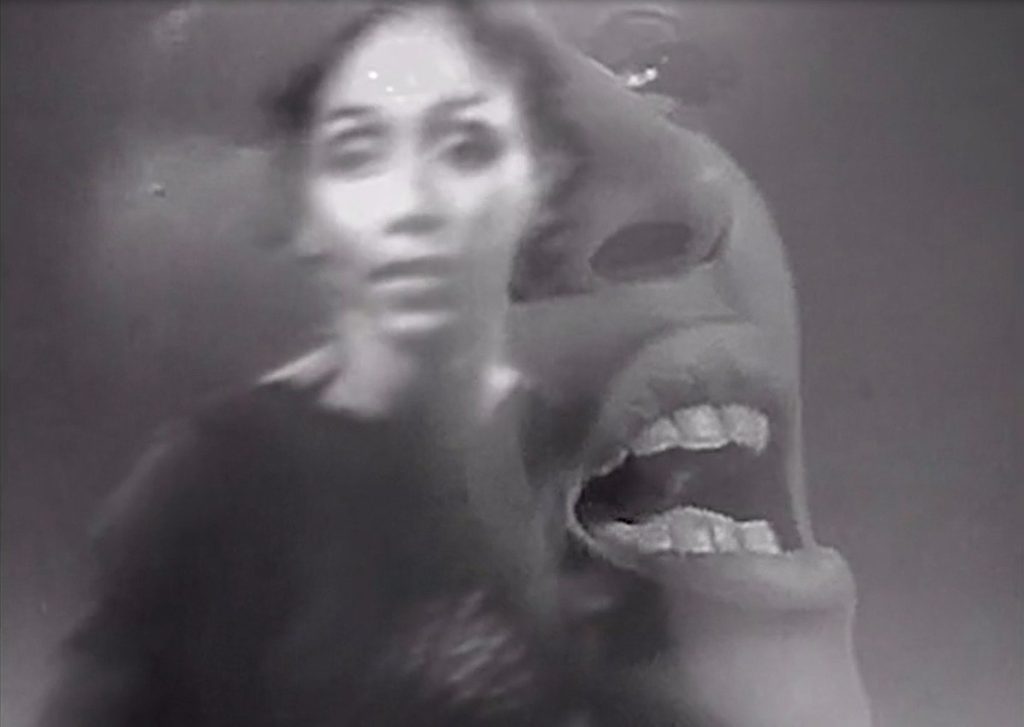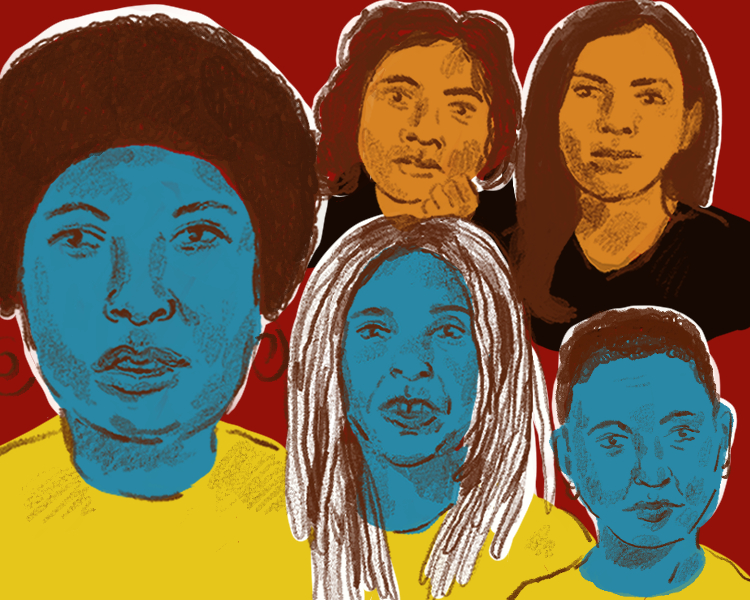By Grace Barber-Plentie. Illustration by Javie Huxley.
The Between Us We Have Everything We Need short film programme was available on Vimeo, from 12pm BST on Friday 14th August 2020 to 12pm BST on Sunday 16th August 2020.

The video of our Zoom roundtable, Saturday 15th August 4-5pm BST, with filmmakers Onyeka Igwe, Rhea Storr and Ufuoma Essi, facilitated by programmer Maria Cabrera, will be available soon accompanied by a downloadable transcript; this will be followed by a subtitled video. The saved chat is available here with links to the filmmakers’ work and recommendations. And we have the two paywalled articles mentioned available for download as PDFs: Daphne A. Brooks’ “Black Female Soul Singing and the Politics of Surrogation in the Age of Catastrophe” [pdf] and Denise Ferreira da Silva’s “Towards a Black Feminist Poethics” [pdf].
The full programme for Club des Femmes’ Between Us We Have Everything We Need weekender 14th-16th August 2020, part of Film Feels Connected, is here.
To be a Black woman and to live in Britain (or to be Black British, if you believe in such a specific terminology) is to be multi-layered.
A set of invisible building blocks, stacked on top of one another, like the world’s most precarious game of Jenga. Or millions of tiny layers of film, like those protective screens you get on an iPhone, or the plastic your auntie’s been keeping her sofa in for 30 years.
More often than not, these layers are not enforced by ourselves. They can rapidly unpeel before our eyes when faced with the neverending questions of ‘Where are you from?’ Where are your parents from? Where are your grandparents from? Where are your great grandparents from? Where are your great great grandparents from?’ The layers peel away.
Maybe sometimes we enforce the layers ourselves as a way of differentiating. Making ourselves stand out, owning ourselves, knowing ourselves. I’m British BUT. I’m Black BUT.
I think that we’re so used to these layers either being hypervisible – when they’re interrogated or pulled apart from outside of ourselves – or totally invisible – this idea of a totally homogenised and harmonious Black British identity, a melting pot where we’re all the same – that it’s sometimes hard for us to call attention to the layers. And what if we’re only calling attention to them for negative reasons? Do we need yet more reasons to separate and differentiate from one another?
But it’s the layers, both in terms of the filmmaking styles and theme, that struck me when watching the shorts in Between Us We Have Everything We Need.
No short tells the same story, from the same experience. Each film speaks to the history of Black people in Britain, but from the filmmaker’s unique viewpoint.
And in fact it’s through these films that we are able to see the empowerment and the radical options available to us when we investigate our own layers and offer them up to the world.

Between us, we have everything we need
In Collective Hum, B.O.S.S. Collective overlay images of sound systems, communal spaces and dancers with voices and sounds to create a ‘polyphony of collectivity’. Shoes on a club floor enter the film as a simple piece of image and sound, before becoming swept up to form a part of a complex and layered soundscape.
A rallying call to look beyond oneself and instead focus on the radical possibilities of working collectively, Collective Hum is multi-layered not just in its construction but in its call to action. Sometimes the layers that we are made up of don’t have to be our own. To be multi-layered can be to be part of a community or a collective. It’s there that we can share experiences and knowledge of others, and
learn together, share skills and resources when often those very things are otherwise out of reach
as B.O.S.S’s Onyeka Igwe told me in a recent interview.
B.O.S.S breaks down layers before the viewer’s eyes to assert the values of collectives. These layers, these shared values, give collectives agency. As the film states – it’s all they need.

It is through making that I can access my own heritage.
In A Protest, A Celebration, A Mixed Message, Rhea Storr aims to deconstruct the layers that make up identity.
Storr breaks down what physically exists: her costume, made up of the colours of the Bahamian flag, made up of aquamarine, gold and black. The colours of the sea, the people and the sun.
But how do we define what is invisible? The layers that make up Blackness, or mixed race-ness?
Looking at Blackness in both rural spaces and at Leeds West Indian Carnival, Storr intercuts the stillness of countryside vistas with rushes of movement, protest and empowerment at the carnival, before combining the two in images of her standing in her front garden in her Bahamian costume, and walking down a country lane.
In making art, Storr combines the layers of her identity visually, to show us how they can sit side by side – that there is ‘no fact of Blackness’.
Storr is her own subject, peeling back her layers and exposing them all to us. But again, in ‘exposing’ herself, Storr is staking a claim to her unique identity. She willingly reveals her layers to us in order to tell her story, and makes no claim that it is like anyone else’s.

I’ll tell you what freedom is to me…
I can’t stop thinking about the way that Ufouma Essi describes All That You Can’t Leave Behind – as an ‘experimental appropriated video archive film’.
It’s hard to pinpoint why this term feels special to me, but I think its root lies in the idea of appropriation: Essi re-appropriates clips for her own usage, to create her own narrative around Black women and reclamation.
We’re used to hearing the phrase ‘appropriation’ when it’s being applied in a negative context – ‘cultural appropriation’ and the like, when those outside our culture attempt to infiltrate or unknowingly copy. But what does it mean to appropriate within your own culture, specifically in the form of moving image?
In the case of Essi, it means that she’s able to adjust footage to tell her story, presenting it in non-traditional but deeply illuminating ways. Once again, this idea of the multi-layered becomes physical, when Essi layers audio of Nina Simone discussing freedom with parties, protests and basketball games – all of which are often taking place in the same frame. As Abbey Lincoln and Max Roach perform their iconic Triptych, a dancer performs too, their actions often taking place within Lincoln’s haunting and powerful howl.
And why shouldn’t these visuals all sit together at once? To return to Storr’s film: ‘There is no fact of Blackness’. All of these feelings and sensations can exist within one body, one identity, one collective, at the same time.
And sometimes we are able to experience these emotions at the same time. In using this overlaid footage, Essi shows us that Blackness can be fighting and celebrating at the same time. Black people can be dancing, wrangling cattle, and playing the drums all at once.
And these emotions don’t always have to have the same meaning, either. In one shot, Lincoln’s howl seems desolate, despairing. Yet when we revisit the footage later in the film, overlaid with imagery of Grace Jones and Nina Simone, it has become rallying and empowering.
All of the filmmakers in this programme demonstrate this idea of a multi-layered identity, whether that’s a collective or individual one, differently. And rather than bemoan it, they celebrate it, and explore it. While none of the films offer a definitive guide to living as Black in Britain – a definitive ‘fact of Blackness’ – what they do show is the myriad ways to be Black in Britain, and to tell our stories. Through layered image, and layered meaning, the films in Between Us We Have Everything We Need show us not just the complexity but the beauty of our existences.
Collective Hum was made through Second Sight, an ICO touring project in association with LUX, with support from the BFI Audience Fund and Arts Council England awarding National Lottery Funding.

